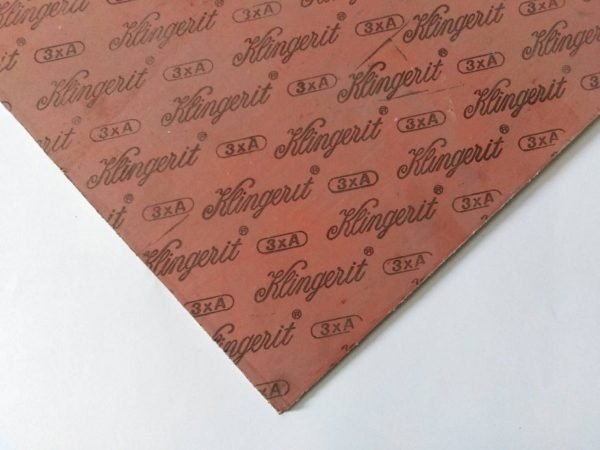Contact your sales representative and clerk
Product datasheets and safety data sheets
Overview of product stock availability
Educational materials
News about industrial seals
Information on new products and services
Exclusive hints and tips
Describe us the parameters of your application. We will recommend the optimal product for you.
We will call you at your chosen time and advise you on what you need.
Our sales and technical representative will come to your company for a personal consultation.

Klingerite is the commercial name of the sealant of the German company Klinger, which was patented by its founder Richard Klinger as early as in 1898. This unique sealing material of its time acquired its specific properties by using asbestos chrysotile fibres (so-called white asbestos). Asbestos is highly thermally and chemically resistant, and Klingerite contained 70-90% of it. This enabled it to function as a versatile sealing material with a wide range of applications.
However, its distribution is now banned in the European Union due to the health hazards of asbestos. Klingerite has been replaced by other materials such as ours:
| Asbestos (Klingerite) | Fiber-rubber (asbestos-free) | |
|---|---|---|
| Fibres | 70 - 90 % | 15 % |
| Fuels | 5 - 20 % | 25 - 40 % |
| Fillers | 5 - 20 % | 40 - 60 % |
Compared to Klingerite, today's asbestos-free boards have a different composition with a higher proportion of binders. In particular, elastomers (SBR, NBR,...) are used as binders, which themselves have a lower temperature resistance ending at approximately 150 °C.
The problem with asbestos is its long and thin fibres, which are so small that they are invisible to the naked eye and at the same time have no smell. When inhaled, the fibres get deep into the lungs where they do not decompose but settle for a long time. Over time, asbestos particles cause a reaction in the body that can result in asbestosis (scarring of the lungs) or lung cancer**.
The dangers of asbestos materials were first warned about in 1898 by British inspector Lucy Dean, who warned of respiratory and lung diseases in workers who were exposed to asbestos on a daily basis. However, her warnings were initially downplayed. It was not until 1991 that asbestos was first banned in the European Union, and only 5 of its 6 types. The particular chrysotile used in Klingerite was not banned, but only regulated. The extension of the ban to include chrysotile came in 1999 with an amendment to Directive 76/769/EEC on dangerous substances.
Klingerite is now replaced by other sealants such as graphite, fibrous rubber materials, or Teflon. The appropriate material is selected based on application parameters such as temperature, pressure and medium. The most versatile material today is graphite, which has the largest temperature range of application and even surpasses Klingerite in the range of applicable parameters.
Klingerite gaskets were single to install. The flange joint could be bumped to "blood ". The materials that have replaced it require a different approach to assembly. For these reasons, the requirement for training of flange joint installers to EN 1591-4, which discusses these procedures, came to light.

Pokorny Industries Partnership in quality
© Pokorny industries s.r.o. 2024 - all rights reserved
Made by servisdesign